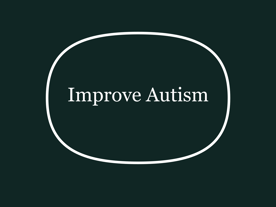Lactobacillus plantarum PS128 and Other Probiotics in Children and Adolescents with Autism Spectrum Disorder: A Real-World Experience
Authors:
Mensi, M.M., Rogantini, C., Marchesi, M., Borgatti, R. and Chiappedi, M
Summary of study
This study suggests that probiotics, especially Lactobacillus plantarum PS128, can lead to significant improvements in children and adolescents with autism over six months. Notable gains were seen in shared attention, stereotyped movements, communication, and autonomy, with younger children showing the most benefit. The group using Lactobacillus plantarum PS128, outperformed the group using other probiotics in both efficacy and safety. However, limitations such as the lack of randomization, small comparison group size, and absence of a control group mean that while these findings are promising, more rigorous research is needed to confirm the benefits and understand how probiotics work in ASD.
Key Findings
The study was an observational, real-world investigation involving 131 children and adolescents with Autism Spectrum Disorder (ASD), with an average age of approximately 7.2 years (86.1 ± 41.1 months) and a male-to-female ratio of 122:19. Participants had been taking probiotics for at least three months, and their progress was evaluated at baseline (T0) and after six months (T1) using the Clinical Global Impression (CGI) scale. This scale measures both the severity of illness (CGI-Severity) and overall improvement (CGI-Improvement).
The participants were split into two groups:
LP Group (n=105): Took Lactobacillus plantarum PS128.
OP Group (n=26): Took various other probiotics prescribed by healthcare providers.
Main Results:
Overall Improvement: Across the entire sample, 77.1% (101 participants) showed clinically significant improvement (CGI-Improvement score of 3 or lower), with 25.2% (33 participants) exhibiting marked improvement (CGI-Improvement score of 1 or 2). Only one participant (0.8%) showed slight worsening.
Age Effect: Younger children showed greater improvement, with a statistically significant correlation between younger age and better outcomes (Spearman's Rho = 0.283; p=0.001).
Side Effects: Side effects were minimal, with 2.3% (3 participants) experiencing increased irritability and another 2.3% (3 participants) reporting transient diarrhea.
Comparison Between Groups:
Baseline Severity: The LP group had slightly less severe ASD symptoms at the start (p=0.018).
Improvement Rates: The LP group outperformed the OP group:
86.7% of the LP group (91 participants) achieved a CGI-Improvement score of 3 or lower, compared to 38.5% (10 participants) in the OP group.
29.5% of the LP group (31 participants) achieved a CGI-Improvement score of 1 or 2, compared to 7.7% (2 participants) in the OP group.
Side Effects: The LP group experienced fewer side effects (1.9% irritability, 1% diarrhea) than the OP group (3.8% irritability, 7.7% diarrhea), with a marginally significant difference (p=0.059).
Probiotics Used and Administration
Probiotics Given:
LP Group: Participants received Lactobacillus plantarum PS128, a strain isolated from fu-tsai, a traditional fermented mustard product from Taiwan.
OP Group: Participants took a variety of other probiotics, as prescribed by pediatricians or gastroenterologists. Specific strains were not detailed, reflecting the real-world variability in probiotic use.
Dosage:
LP Group: Dosage was weight-based:
Children under 30 kg: 3 × 10¹⁰ Colony Forming Units (CFUs) daily.
Children over 30 kg: 6 × 10¹⁰ CFUs daily.
OP Group: Dosage varied by product but was considered adequate if it fell within the recommended range for the participant’s age, weight, and specific probiotic formulation.
How Administered: The study does not specify the exact method (e.g., capsules, powder), but probiotics are typically taken orally.
Symptoms Improved and Timeframe
Symptoms Improved: The CGI scale provided a global assessment rather than targeting specific symptoms. However, caregivers reported improvements in:
Shared Attention: Noted in 54 participants.
Stereotyped Movements: Reduced in 43 participants.
Communication Skills: Improved in 32 participants.
Personal Autonomy: Enhanced in 23 participants.
Some participants showed gains in multiple areas simultaneously.
Timeframe for Improvement: Improvements were measured after six months of probiotic use (from T0 to T1). The study does not indicate when improvements began within this period, only that they were evident by the six-month evaluation.
https://pubmed.ncbi.nlm.nih.gov/34198499/
doi: 10.3390/nu13062036


